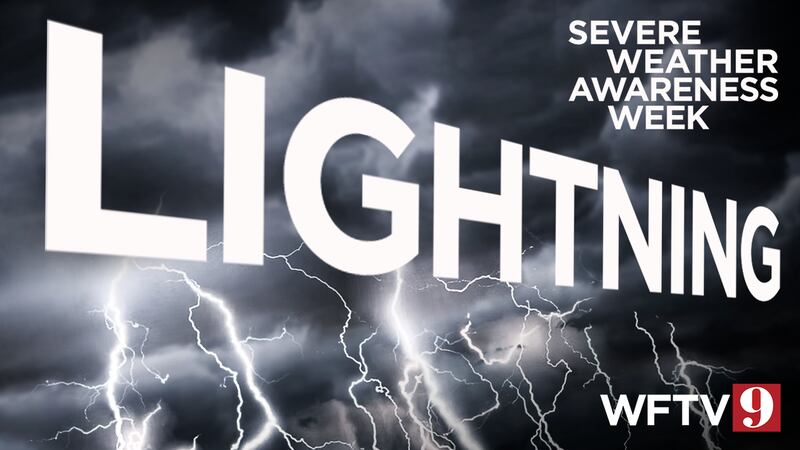ORLANDO, Fla. — Severe Weather Awareness Week in Florida is officially underway.
>>> STREAM CHANNEL 9 EYEWITNESS NEWS LIVE <<<
The week is observed each year by the National Weather Service and Florida Division of Emergency Management to increase awareness and preparedness for severe weather and related hazards.
READ: Severe Weather Awareness Week: 9 things to know about lightning
Each day focuses on a different weather event Florida experiences. Tuesday is rip currents and other marine hazards.
Read 9 things to know below:
- A rip current is a narrow current of water moving away from the coast toward the ocean, generally less than 25 meters wide.
- Rip currents can move up to 8 feet per second, faster than an Olympic swimmer.
- Rip currents may sweep you away from shore, but will not drag you under the water. If you’re caught in one, don’t panic. Tread water and swim parallel to the shore. You’ll eventually swim out of the current. After getting out of the rip current, you can then swim back to shore.
READ: Hurricane Safety: 10 tips to stay safe when returning home after a natural disaster
- Rip currents are often incorrectly referred to as “riptides.” Riptides are completely different phenomena, a tidally driven movement of water through inlets and mouths of estuaries.
- Responsible for an average of 100 U.S. deaths annually, rip currents are one of the deadliest weather-related phenomena.
- Rip current activity can depend on many variables, including wave heights, period and direction; beach slope and material; tide cycle; wind and other factors.
READ: Hurricane safety: 15 tips that could save your life during a storm
- Rip currents can occur at any beach with breaking waves, including beaches on the Great Lakes.
- The majority of the deaths related to rip currents occur when the rip currents pull people away from the shore and they’re unable to keep themselves afloat, likely because of fear, panic, exhaustion, or lack of swimming skills.
- The following visuals may be clues that a rip current is present: A channel of churning, choppy water; a difference in water color; a line of foam, seaweed or debris moving seaward; a break in the incoming wave pattern.
Lightning in Central Florida: How to protect yourself
Click here to download the free WFTV news and weather apps, click here to download the WFTV Now app for your smart TV and click here to stream Channel 9 Eyewitness News live.
©2023 Cox Media Group






